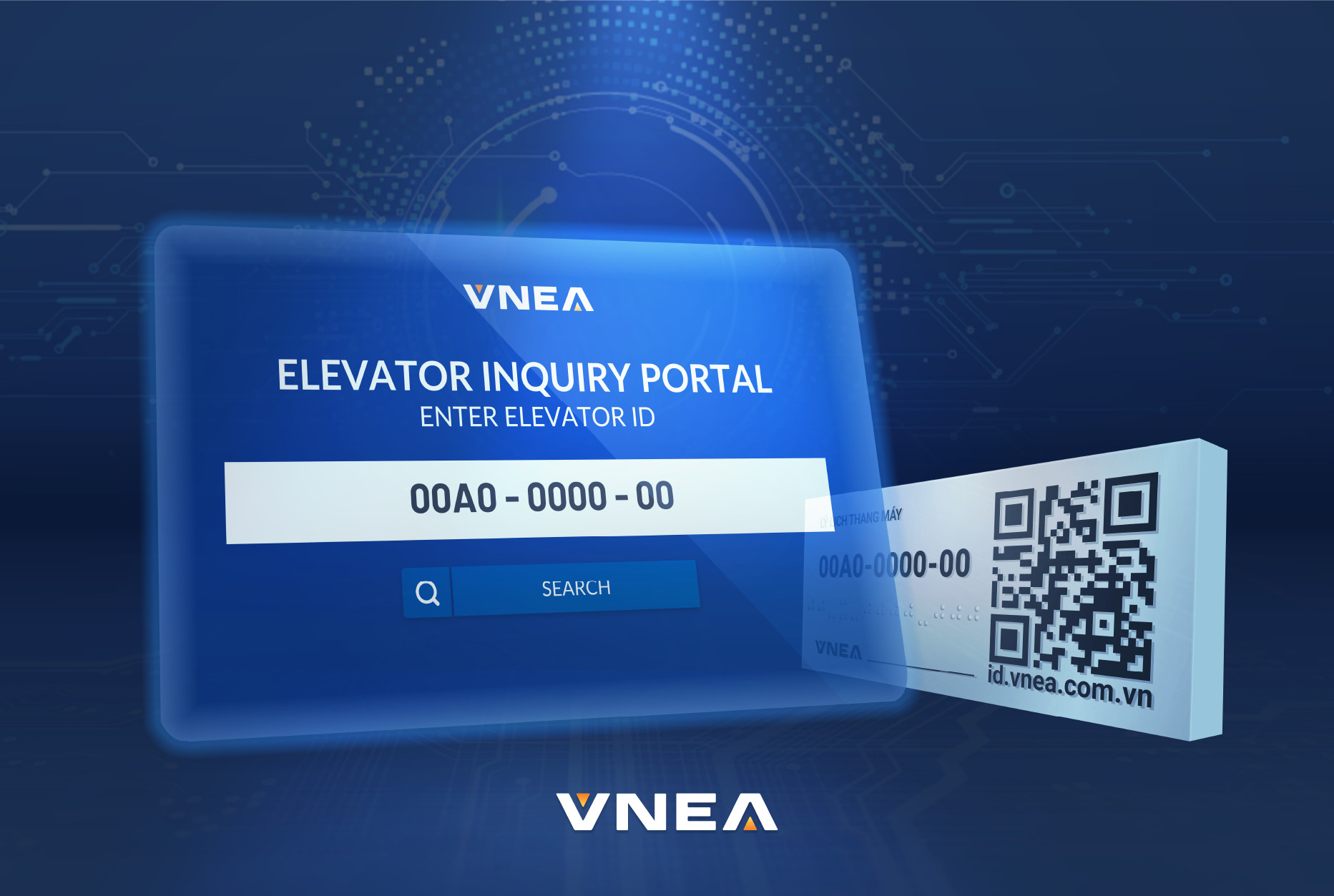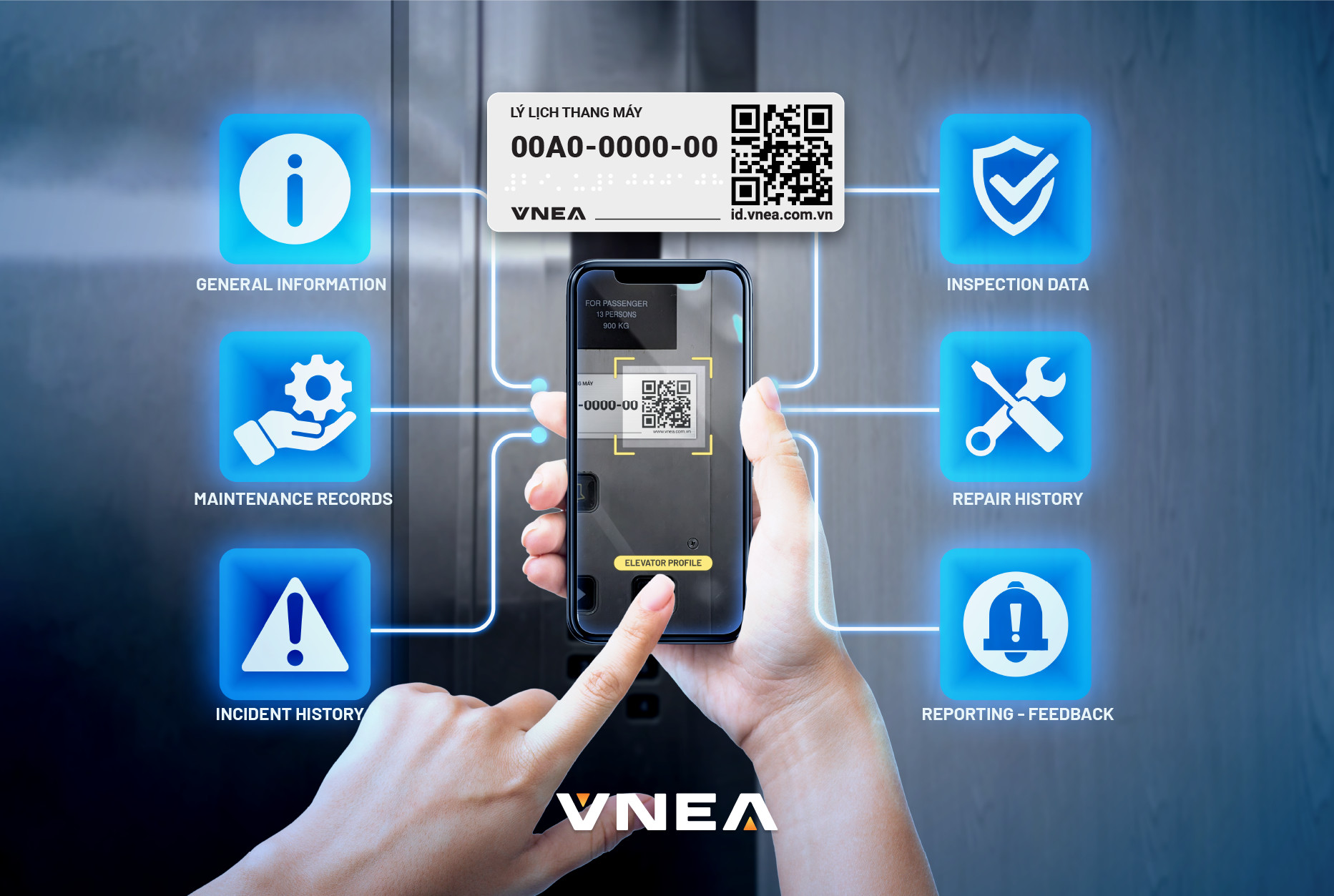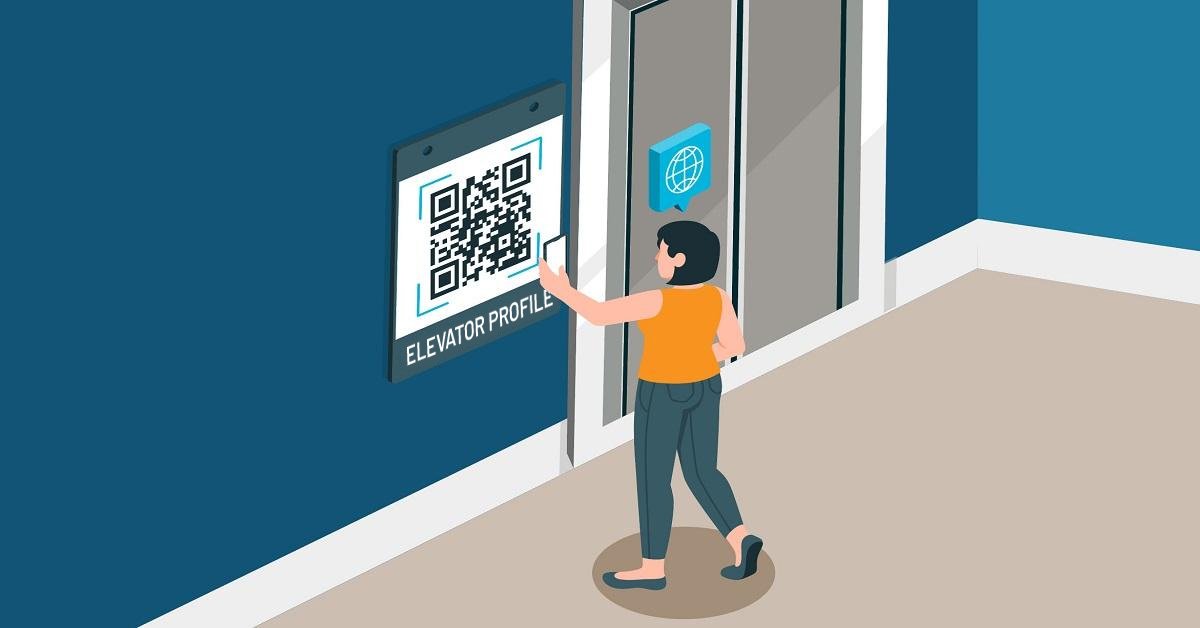EM – The elevator identification code system’s implementation represents a significant advancement in elevator management and operation. This system enhances transparency by providing users with information about the safety status of elevators, while also improving the efficiency of maintenance, repair, and rescue operations for businesses and government regulatory agencies.
Elevators can experience malfunctions or incidents anywhere, from residential buildings, apartments, to office buildings, shopping centers, and more. Although they are not among the commonly reported accidents such as fires or traffic accidents, elevator incidents still have serious consequences for human lives and health.
Recently, the Law Newspaper of Ho Chi Minh City reported a tragic incident involving Ms. Le Thi Diem Quynh, a 31-year-old resident of Chu Kbo commune, Krong Buk district, Dak Lak province. Due to an elevator accident while shopping at a local store, she suffered paraplegia and had to terminate her 6-week-old pregnancy.
The incident involving Ms. Quynh is just one among many elevator accidents recorded recently. These accidents can arise from various causes such as elevator door malfunctions, faulty safety brake systems, electrical/mechanical failures, or even the use of makeshift elevators that do not meet legal regulations but continue to operate on a daily basis.
In general, the underlying problem is inadequate regular maintenance, repair, and inspection of elevators, and failure to comply with regulations. To gain a deeper understanding of the issue, it is the result of our lacking a well-established and systematic management and monitoring system for elevator operations.
Faced with elevator incidents, we find ourselves primarily inclined towards reactive measures rather than proactive prevention. Meanwhile, many regions and countries around the world, including South Korea, Singapore, and Hong Kong, have successfully implemented digitized national elevator management systems.
With the goal of establishing a comprehensive elevator information system that benefits all stakeholders including consumers, businesses, and the government, the Vietnam Elevator Association has embarked on the development of the Elevator Identification Code System, which is currently being actively piloted and implemented.
This project not only enhances transparency by providing information about the safety status of elevators to users but also improves the efficiency of maintenance, repair, and rescue operations for businesses and government regulatory agencies.

Through the elevator identification code system, users can access information related to the elevator and provide feedback on any issues encountered during the elevator operation.
The Elevator Identification Code System, developed by the Vietnam Elevator Association, is a comprehensive management and monitoring system for elevators/escalators using ID numbers and QR codes (Quick Response code). This system facilitates the management of all stages throughout the lifespan of an elevator, including manufacturing, installation, maintenance, repair, and dismantling/replacement.
Specifically, each elevator/escalator will be assigned a unique identification code in the form of an ID number and QR code. Identification labels containing the identification code will be directly affixed to easily noticeable locations as prescribed, such as in front of elevator doors on each floor and inside the elevator cabin.

With the information retrieval system and the ability to report/incident escalations related to elevators, citizens will play a central role in supporting regulatory agencies to enhance the monitoring of national elevator safety systems.
Citizens can access detailed information about elevators by either accessing the Vietnam Elevator Association Information Portal and entering the ID number or scanning the QR code directly using a smartphone. The system will then provide users with various elevator-related information, including:
– General information: Installation address, manufacturer, installation date, etc.
– Technical specifications: Load capacity, number of floors, speed, etc.
– Inspection data: Inspection date, current validity status of inspection, etc.
– Maintenance records: Maintenance date, performing entity, results, etc.
– Repair history: Repair date, performing entity, repair details, etc.
– Incident history: Incident date, causes, resolutions, etc.
With the aim of placing users at the center and empowering them as the primary monitors, in addition to the information provided by the management system, users can proactively report issues related to elevator conditions, such as elevator incidents, expired or missing inspections, suspicions regarding the origin of components and equipment, etc.

The ID numbers and QR codes of the elevators will be placed in accessible locations such as near floor entrances and inside the elevator cabins, making it convenient for users to access.
Based on the experience and proven effectiveness in many countries worldwide, the elevator identification code system implemented by the Vietnam Elevator Association as a digital technology solution will be an efficient and comprehensive approach to enhancing safety, management, and service quality in the elevator industry.
This system will establish a “self-regulating environment” between users and the entities responsible for elevator management, thereby providing tangible benefits for all three parties involved: Users, elevator businesses, and regulatory authorities.
For users, the elevator identification code allows them to:
– Check information: Easily access information about inspection status, licensing, and evaluations regarding maintenance and repair work. This helps users make informed decisions about whether the elevator is safe to use or not.
– Report incidents: Users can promptly report dangerous situations or safety issues such as elevator malfunctions or expired inspections to the management system for swift resolution.
– Enable quick rescue: By providing the elevator identification code to rescue teams, users can be rescued more efficiently. This allows the rescue team to easily identify the building and the specific elevator in need of assistance.

The elevator identification code system developed by the Vietnam Elevator Association aims to become one of the leading countries in elevator safety.
For elevator businesses, the elevator identification code provides several benefits:
– Enhance service quality: By receiving feedback from users through the identification code system, elevator businesses can quickly gather insights and improve the quality and safety of the elevators they manage.
– Streamline management processes: The system simplifies the management of elevator conditions, increasing the efficiency of technicians. This optimization allows for better scheduling of technician work, resource allocation, and improved overall effectiveness while minimizing unnecessary operational costs.
– Optimize maintenance and repair work: The elevator identification code provides essential information on the maintenance, repair, and replacement history of elevators. This enables better maintenance prediction, remote diagnosis, and error checking, reducing downtime of machinery and equipment due to malfunctions and enhancing the customer experience.
For regulatory authorities, the elevator identification code system provides the following support:
– Enhanced management effectiveness: Regulatory authorities can inspect and monitor the existing elevator systems, particularly focusing on expired inspections, unauthorized operations, or alerting to the presence of outdated and potentially unsafe elevators.
– Incident analysis and resolution: In the event of elevator incidents or accidents, analyzing repair data, replacement records, and incident history helps regulatory authorities quickly identify the causes, determine responsibilities of involved parties, and expedite the resolution of the incidents.
The elevator identification code system developed by the Vietnam Elevator Association is not merely a tool for information collection and analysis, but it also has a strategic vision aimed at the noble goal of preventing future elevator incidents and accidents, increasing and ensuring safety for the entire population.
Being a powerhouse in the elevator industry is not just about having many elevators. The Vietnam Elevator Association aims to become a “powerhouse” by establishing a comprehensive elevator management system that prioritizes people, ensures safety, and prevents tragic incidents that should never occur.
Hoàng Quân